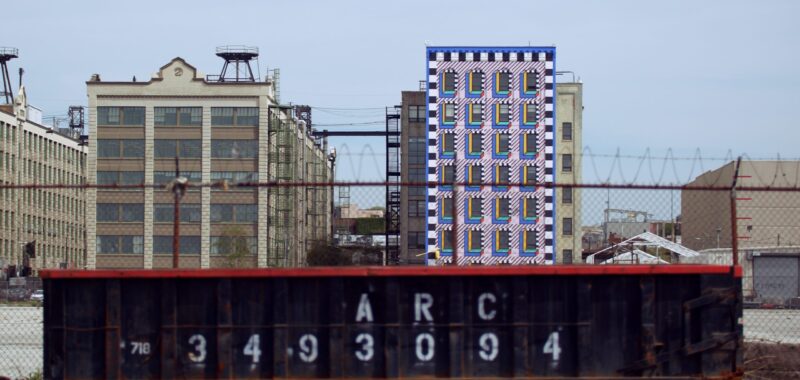Of all the progress made in documentary filmmaking over the past century, the most widely recognized function of the form is perhaps still the accurate recording of facts. At its most extraordinary, it produces raw or revealing moments such as a Russian spy’s admission of a drugging to Alexei Navalny over the phone in Navalny (2022), Chinese policemen’s dogged violence and intimidation toward filmmaker Nanfu Wang in Hooligan Sparrow (2016), or a group of feisty Irish boys developing critical thinking skills and self-awareness through studying philosophy in Young Plato (2021). But elevating the documentary from a mere tool of empirical inquiry or spectacle to an art form requires both narrative storytelling and poetic experimentation.
Co-directors Kelly Anderson and Jay Arthur Sterrenberg achieve just that with Emergent City (2024), returning to the old-school “fly-on-the-wall” method of filmmaking to create a vividly thrilling story about democracy in practice in the Sunset Park community of Brooklyn, New York. With a scholar’s mind for precision and a storyteller’s eye for drama, Anderson and Sterrenberg followed the community’s latest struggle against a zoning change that would lead to increased development on 70 acres of land at the industrial waterfront. The resulting cinematic experience recalls Frederick Wiseman’s films on public institutions and Jill Li’s Lost Course (2019): informative on civic matters, cohesive narratively, and rewarding to watch.

The origin of the film can be traced to 2013, three years after Anderson sold her former apartment in Fort Greene and moved to Sunset Park, and a year before Sterrenberg relocated there along with his production company, Meerkat Media, after being displaced from three office spaces over a short few years. It was also the year that Jamestown Properties, together with two other equity firms, purchased Industry City and began to transform the historic complex of manufacturing and warehousing spaces at Sunset Park’s northern waterfront into a vibrant hub of the “innovation economy.”
What that meant, in practice, was attracting artists, designers, and other independent creatives in search of cheaper rent from places like Manhattan. Although not all of the tenants and endorsers of the development came from outsiders, its sunlit open-layout offices and subscription-based shared workspaces offering lemon water are evidently at odds with a local community comprised of mostly Mexican and Chinese immigrants working lower-end, more labor-intensive manufacturing jobs.
Though the directors lightly ridicule the aesthetics of the new space, they allow Jamestown spokesmen, notably President and Chief Executive Officer of Industry City Andrew Kimball (who has since been appointed President and CEO of the New York City Economic Development Corporation by Mayor Eric Adams), to make their best case for the development through interviews and public speeches. But as articulated by other interviewees such as Elizabeth Yeampierre, executive director of UPROSE, the oldest Brooklyn-based Latine organization, it is not the vision of a brighter, larger, and prettier space, nor the resulting 20,000 additional jobs, that is the problem with this proposed upzoning effort, but rather the distribution of wealth and opportunities. What the community wants are green jobs and sustainable developments that return dividends to the local neighborhood and environment, rather than those the development seeks to attract.

It is easy to wax poetic about larger narratives of tragedy and romance in stories such as this one, but Emergent City distinguishes itself by focusing on the messy details of bureaucratic and democratic processes, the absence of clear-cut solutions, and the tenacious optimism and imagination of its interviewees. The film gains as much from an abundance of material — over a thousand hours of footage of meetings, community education sessions, public hearings, and town halls filmed over a decade — as from a two-year contract with ITVS, a documentary incubator, which allowed the filmmakers to spend a year solely dedicated to reviewing footage. The directors allow this work to shine: A climatic scene toward the film’s end splices together clips from a City Council hearing consisting of the opposing testimonials of more than 200 community members that lasted for almost 12 hours.
“They could have built on the strengths of that area,” Anderson said in 2014 following a screening of her 2012 film My Brooklyn, about the gentrification of the Fulton Mall in the 2000s. “It’s just that nobody cared. There really was a lack of attention, I think, and a lack of planning.” If attention and planning are what city officials and investors have tended to lack when it comes to undervalued communities, Emergent City gives and encourages both in plenty.

Emergent City (2024), directed by Kelly Anderson and Jay Arthur Sterrenberg, will screen at various locations in New York City from September 21–26, and as part of the Dialogues Documentary Film Festival in Milwaukee on September 28.

